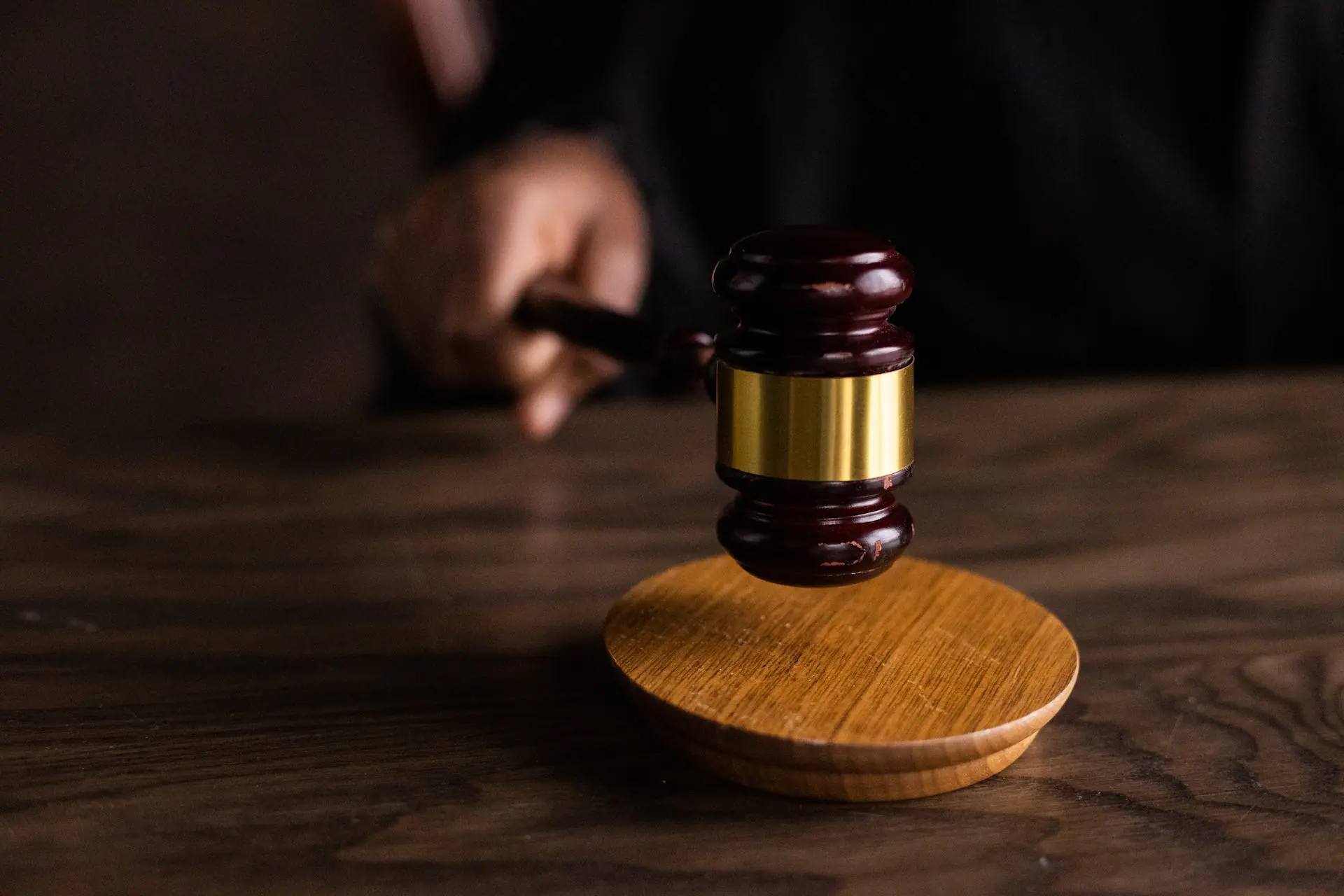Negligence often lies at the heart of personal injury cases, shaping their outcomes significantly. In personal injury law, negligence generally means not taking the necessary care in a situation. This then leads to someone getting hurt or harmed.
At Johnson Garcia, we understand the profound impact negligence can have on lives. Our expertise in this area is critical for those seeking justice and compensation. We’re dedicated to guiding our clients through the complexities of negligence in personal injury cases, providing the understanding and legal support they need to move forward.
What Is Negligence?
Negligence in legal terms is nuanced, involving a failure to act as a reasonably prudent person would under similar circumstances. It’s about a breach of a duty of care that leads to unintentional harm or injury. This can manifest in various forms, such as ignoring safety protocols, careless driving, or failing to address hazardous conditions.
Due to this complexity, understanding and proving negligence requires skilled legal interpretation. That’s where the expertise of a personal injury lawyer becomes essential. A lawyer can navigate these intricacies, effectively demonstrating how negligence occurred and ensuring the injured party’s rights are adequately represented and compensated.
How Is Negligence Proven?
Proving negligence in a personal injury case involves a detailed legal process. It requires demonstrating four key elements:
- The existence of a duty of care owed by the defendant to the plaintiff. This means that the defendant had a legal obligation to act in a certain way. For example, in a car accident case, a driver has a duty to follow traffic laws and drive safely to avoid harming others. The specifics of this duty can vary depending on the relationship between the parties and the circumstances of the case. Establishing this duty is the first step in showing that the defendant’s actions were negligent.
- A breach of that duty. This involves showing that the defendant failed to uphold their legal obligation towards the plaintiff. For instance, in the context of a medical malpractice case, a breach could occur if a healthcare professional deviates from standard medical practices, leading to patient harm. Demonstrating this breach requires comparing the defendant’s actions to what is reasonably expected in similar situations, underscoring where their conduct fell short of the required standard of care.
- A direct causal link between the breach and the injury sustained. This step involves demonstrating that the defendant’s failure to meet their duty of care directly resulted in the plaintiff’s injury. For example, in a car accident, it must be shown that the defendant’s reckless driving was the direct cause of the plaintiff’s injuries. This causal connection is often the most challenging part of a negligence case, requiring clear evidence that links the defendant’s actions to the harm suffered by the plaintiff.
- Damages resulted from the breach of that duty. The plaintiff must prove that they suffered actual damages as a result of the negligence. These steps can be complex and require meticulous evidence gathering and legal argumentation.
Proving negligence can be tough, especially when you’re dealing with the stress of an injury. That’s where we, Johnson Garcia, come in. We’re here to break down the legal jargon, build a solid case, and really fight for your right to fair compensation. You don’t have to face this alone — let our team stand with you.
What Is ‘Duty of Care?’
Duty of care in a negligence case refers to the legal obligation to exercise a reasonable level of care to avoid causing harm to others. It’s a fundamental concept in personal injury law that varies based on the relationship between the parties and the situation. Proving a breach of this duty can be complex, as it requires showing that a reasonable person in similar circumstances would have acted differently.
At Johnson Garcia, we’re experienced in demonstrating when a duty of care hasn’t been met. We use evidence and legal precedents to establish negligence in personal injury cases. Our team looks into the specifics of each case, examining protocols and procedures to build a strong argument for our clients’ claims. That way, we can build a strong case so clients can receive the justice and compensation they deserve.
What Is Considered a Breach of Duty of Care?
A breach of Duty of Care occurs when an individual fails to act as a reasonably prudent person would under similar circumstances. Such actions may include:
- A driver texting while driving
- A property owner neglecting to fix a known hazard
- A doctor failing to diagnose a treatable medical condition
- An employer not providing adequate safety equipment at work
- A business ignoring wet floors without signage, leading to slips
- A manufacturer producing a defective product that causes injury
- A pet owner not restraining an aggressive dog
- A school failing to address bullying incidents
- A construction company not following safety protocols
- A pharmacist dispensing the wrong medication
Each case hinges on proving that the individual’s actions or inactions were unreasonable and directly led to harm or injury. Identifying and proving such breaches can be intricate, involving detailed evidence and legal expertise.
How Is Causation Determined in a Negligence Case?
In a negligence case, establishing causation goes beyond showing the defendant’s breach of duty. It requires demonstrating that the injury would not have occurred without the defendant’s actions or inactions.
This step often involves presenting evidence such as medical records, expert testimony, and accident reconstructions to illustrate the direct link between the breach and the resulting harm. The legal focus is on the “proximate cause,” which examines whether the injury was a foreseeable consequence of the defendant’s conduct. Establishing this causal relationship is essential for a successful negligence claim.
The concept, often summed up by the phrase “but for the defendant’s actions, the injury would not have occurred,” requires a logical and direct connection between the breach and the harm. At Johnson Garcia, our personal injury team uses several approaches to build the causation link in negligence cases:
- Gathering Comprehensive Evidence. We collect detailed evidence, including medical reports and accident scene data.
- Employing Expert Testimony. We utilize expert witnesses to establish how the breach directly caused the injury.
- Conducting In-Depth Analysis. Our team meticulously analyzes the facts to connect the defendant’s actions to the injury.
- Legal Argumentation. We skillfully craft legal arguments that clearly demonstrate the causal relationship.
- Comparative Analysis. We compare the incident to similar cases to strengthen the causation claim.
Building a strong causation link in negligence cases is essential. At Johnson Garcia, our detailed approach to gathering evidence, utilizing expert testimonies, and crafting compelling legal arguments ensures that each aspect of the causation is thoroughly established. This meticulous process is vital for a successful negligence claim, reinforcing our commitment to achieving justice for our clients.
What Damages Can You Seek in a Negligence Case?
In a negligence case, the types of damages you can seek are diverse, each addressing different aspects of your loss and recovery.
Economic Damages
Economic damages in negligence cases are quantifiable financial losses resulting from the injury. They typically include medical bills, covering both past and future medical care related to the injury. Lost wages are also covered, compensating for the time the injured party couldn’t work due to their injury.
Additionally, if the injury results in the inability to work in the future, loss of earning capacity can be claimed. These damages are calculated based on actual expenses and financial losses, making them a crucial aspect of the compensation sought in a negligence case.
Non-Economic Damages
Non-economic damages in negligence cases address intangible impacts like pain and suffering, emotional distress, loss of enjoyment of life, and damage to reputation. These damages recognize the emotional and psychological effects of an injury, which, although not directly measurable in financial terms, significantly affect the victim’s quality of life.
Calculating these damages can be complex as they depend on subjective factors like the severity of pain and the extent of emotional trauma. They play a crucial role in ensuring comprehensive compensation for the overall impact of the injury on the individual’s life.
Punitive Damages
Though less common, punitive damages are sought in cases of egregious negligence primarily to punish and deter extremely harmful behavior. They go beyond compensatory aims and are designed to penalize the defendant for conduct that is considered particularly reckless or malicious.
These damages are a legal tool to discourage similar negligence in the future by imposing a financial penalty that goes beyond mere compensation. They are typically awarded in cases where the defendant’s actions are found to be willfully negligent or harmful, serving as a strong message to uphold safety and care standards.
Each category of damages is vital in ensuring that victims of negligence are fully compensated for the wide-ranging impacts of their injury. Having a seasoned personal injury attorney, like those at Johnson Garcia, can be pivotal. We bring expertise in accurately assessing and articulating these damages, navigating the legal complexities to secure fair and comprehensive compensation for their clients.
What Are the Types of Personal Injury Cases?
Personal injury cases encompass a wide range of incidents where individuals suffer harm due to someone else’s negligence or intentional actions. Common types of personal injury cases include:
- Vehicle Accidents. Involving cars, motorcycles, or trucks.
- Slip and Fall Incidents. On unsafe premises.
- Medical Malpractice. Resulting from healthcare professionals’ negligence.
- Workplace Injuries. Accidents occurring at work.
- Product Liability. Injuries caused by defective products.
- Assault and Battery. Intentional acts causing harm.
Each type of case presents unique challenges and requires a tailored legal approach. Understanding these distinctions is crucial for a successful personal injury claim, emphasizing the need for experienced legal counsel like Johnson Garcia to guide you through the process.
How Johnson Garcia’s Personal Injury Attorney Can Help Prove Negligence
At Johnson Garcia, with our 35+ years of experience, we understand the intricacies of proving negligence in personal injury cases. We are committed to thoroughly investigating each case, utilizing our extensive legal knowledge and resources to build a strong argument for you. Our team is ready to take your case to court if necessary, fighting tirelessly for your rights and the compensation you deserve. Don’t wait to get the help you need. Let’s start working together today to address your legal needs and move toward the resolution you deserve. Contact us now for a free consultation, either by phone at 832-844-6700 or by filling out our online form.


